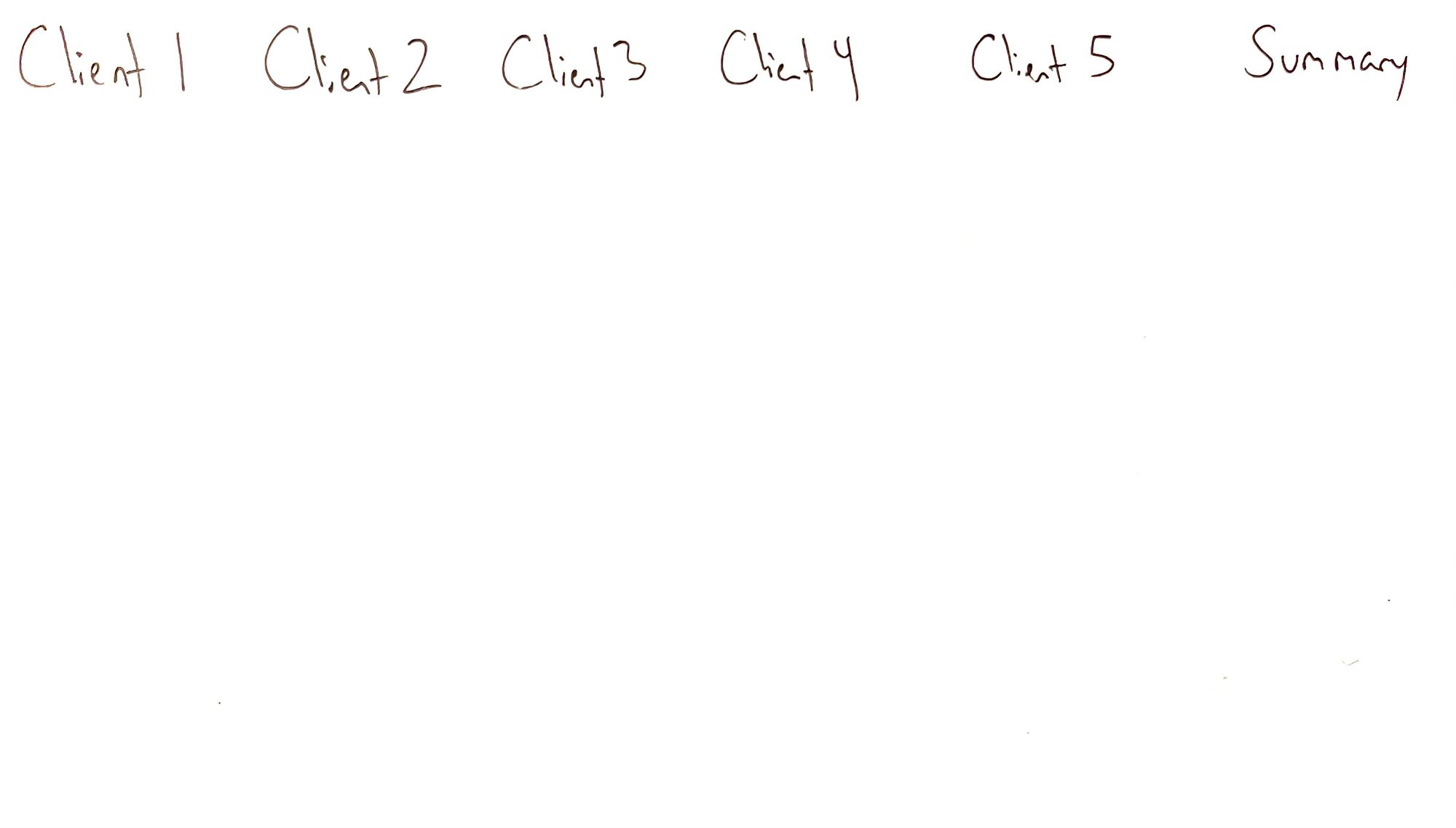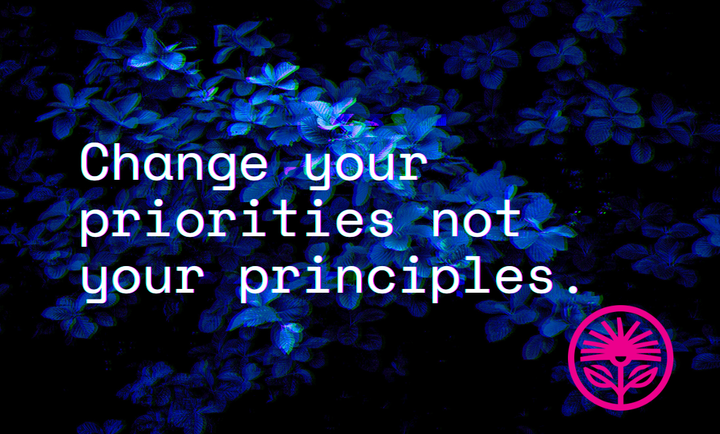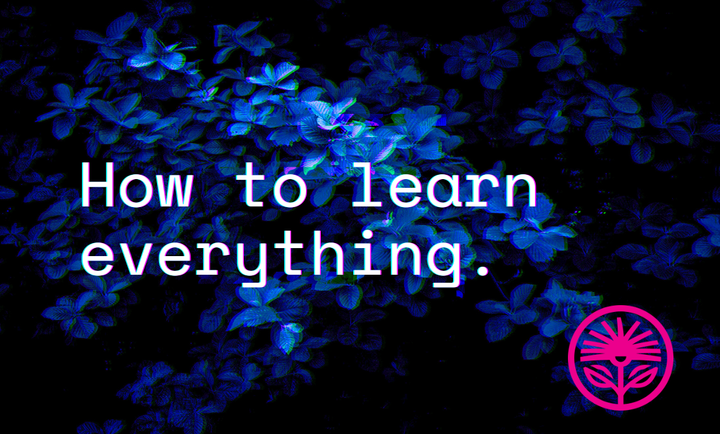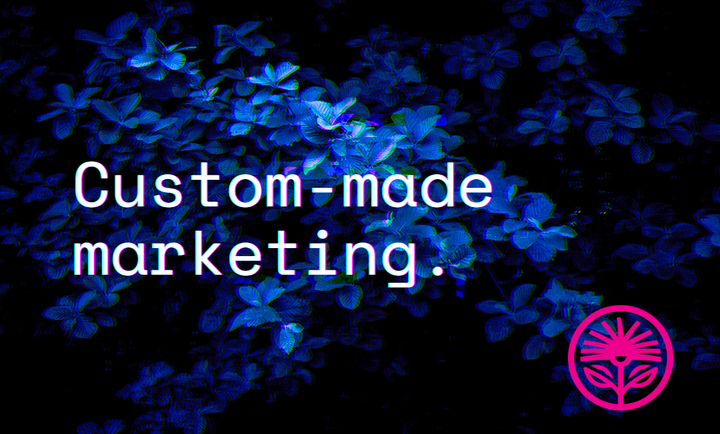Framework: Marketing Message Maker
Today, we’re going to combine a little bit of science with a little bit of art to help you figure out what to say when you’re asked what you do.

Last week we talked about the challenge of knowing what to talk about when you talk about your business. Simply telling someone what you do, or what industry you’re in, doesn’t demonstrate your value in any meaningful way. That’s not marketing.
Marketing is the art and science of demonstrating your value at a distance.
And today, we’re going to combine a little bit of science with a little bit of art to help you figure out what to say when you’re asked what you do.
Because how you talk about what you do is every bit as important as what you do, as far as your best customers are concerned.
I’ll say that again: what you say is as important as what you do.
I know that you might resist me here, because surely the thing you actually produce, the value you create, the service you provide—surely the real, tangible effect you have on the world is more important than the words you use to describe them, right?
No, not really. Because value is in the eye of the beholder. There’s no “value” until there’s a customer. There’s no “service” until there’s a client. There’s no “product” until there’s a buyer.
Business happens, is created, in the exchange of value—not in its promise or its conception.
But to profitably exchange our value we must demonstrate it. And what makes us business people—entrepreneurs—is our ability to demonstrate at a distance.
That requires us to know what our value actually is in the purchasing mindset of our ideal customers:
Who are the people who typically buy from us at profitable prices?
What do they get that’s worth that price to them?
Why are we uniquely able to provide that value?
When do they need us, and where do they go to find someone like us?
So that’s today’s framework—how to use those components to build a framework for marketing messages that work, and that you’ll love to write.
Grab a sheet of paper and rotate it horizontally.
Step One:
Write this in a row across the top of the page:
Client 1:
Client 2:
Client 3:
Client 4:
Client 5:
Summary:

Now, under each Client number, write down the first name of a financially or emotionally profitable client, customer, or buyer you’ve had in the past year.
Financial profit of course means a client who paid you more than it cost you to work with them (in time or money), and emotional profit means a client who was so enjoyable to work with that you would have happily worked with them for less than you charged.
We all know some clients are financially profitable, some emotional, and a lucky few are both. For your five names, strive for a mixture, but don’t overthink it.
Just don’t write down any name you wouldn’t love to work with again.
To give you an example, I’m going to write “Katie” (name changed) under Client 1, and I’ll use her as an example as we go through. Make sure you fill out all five of yours, though.
Step Two:
Now, under each name, write down what they specifically came to you for.
Not what you ended up doing, and not what you think the “true value” was. What did they think they wanted when they first came to you?
This should just be a couple words. Under Katie’s name, I’m going to write, “Marketing budget audit,” because Katie first came to us to review her marketing budget as her spend was eating into her profits without paying her back.
Step Three:
Okay, now here’s your time to shine.
How did you specifically help in your own unique way? And why were you, specifically, the best choice in that moment?
Again, this isn’t about the overall picture, and you’re not yet trying to generalize. Be as specific as you can be.
Under Katie’s name and her initial request, I’m going to write, “We came highly recommended, and we helped her create a new marketing strategy that efficiently made use of existing resources.”
So that’s interesting. Katie came to us for an audit of her budget, but it looks like that wasn’t where the true value was for her. It sounds like, reading above, that the audit was just a conversation starter, and perhaps the real value was somewhere else.
But let’s hold off on going down any paths for now—just fill out your five “Hows”.
Step Four:
Okay, so we’ve got a list of five names, what they asked for, and what you did for them (and why you were uniquely suited to help).
Now we need to know when they needed you. Think back to your first interaction with them—what happened in their life, their day, or their business that made them realize they needed outside support to fix a problem or capitalize on an opportunity?
For Katie, she was reviewing her marketing spend and saw that a significant amount of her profit had gone into marketing without any obvious return. So I’m going to write down, “Reviewing yearly marketing budget with finance team.”
For each of your Who, What, and Hows, write down the When. This might be a season, a business milestone, a daily activity, or an occasional challenge. Whatever it is, record it.
Step Five:
Okay, we’ve got five names, what they wanted, how you helped, and when they needed you. The last question is, Where did they go when they had that need? Did they ask a friend for help? Run to Google? Post in a Slack or Discord channel? Issue an RFP?
Under Katie, I’m going to write, “Asked team member for recommendations of reputable marketers.”
Write down where your best customers went when they realized they needed help.
Step Six:
Well look what we have here. You now have five of your best customers written down, and you now know who they are, what they wanted, how you helped, when they needed you, and where they went to find you.
And, if we did it carefully, this information should be extremely specific. If you’re reviewing it and it looks broad or vague, or you’re already seeing generalizations, go through the exercise again, striving for more specifics.
Once you’ve done that, now comes the time for some generalizations.
But first, you may have already noticed something. If you’re anything like everybody, it’s probably the case that one of the clients you wrote down doesn’t quite fit right. Like so many things in life and business, the 80/20 rule applies here, too. 80%, or 4 out of your 5 names, probably share something very specific in common, and you probably have one outlier.
(If that’s not the case, don’t worry, that’s okay, too! You’ll still move on to the next part, it’ll just be a bit trickier.)
Because now you’re going to cross out one of the client columns. Read through all 5 client columns and choose one that doesn’t feel like it fits as well as the others.
If nothing comes easily, take a few minutes and ask yourself, “If I could never work with one of these fabulous folks again, who would I choose?”
Remember, this is never about bad people, bad clients, or bad work. It’s about bad fit. Business owners who complain about their clients are in the wrong business, whatever it is.
So cross out one name—only one, but at least one—and take another look at your list.
First, look at the names and cast your imagination back to the project. What did these people have in common? Were they especially fun to work with? Did they all have deep pockets? Did they all have modest budgets, but big ambitions?
This it what our Summary column is for, and it’s where we finally let ourselves generalize. Write down the most specific thing that’s true about all of them (that’s also relevant to your business, of course).
When we did this exercise, the 4 clients left in our list were all mid-career women. Yours might be more specific, or less. The important thing is that you write down something that’s true and specific as possible that applies to all four remaining names.
Step Seven:
You can probably guess what’s next. What’s the most specific thing you can say that’s true for all your Whats? For us, it was “A marketer they could trust”.
Step Eight:
Now, your Hows. What was true about everything you did, that’s specifically focused on these four clients. What was it about you, your business, or your process that made you perfect for these four businesses? For us, we wrote down, “We were already credible before we met.”
Step Nine:
Now summarize your Whens. For us, it became very clear for our remaining names that they realized they needed someone like us when they “had an opportunity or inspiration to grow, but sustainably and for the long-term.” Something happened that triggered a desire to expand, but they didn’t want to do so recklessly or joylessly.
Step Ten:
Finally, your Wheres. As specifically as possible, summarize where these clients went to find someone like you. For us it was, “Asked trusted colleagues for referrals.”
Okay, you’ve got your massive table, and you’re staring at it wondering what to do next.
Finally:
Write out your summary as a sentence. Something like this:
“My best clients are [WHO] who [WHAT] [WHEN], because I’m able to [HOW] [WHERE].”
You’ll need to play with the language a bit (remember, this is an art and a science) until you get something like:
“My best clients are mid-career women who want a marketer they can trust when they’re ready to grow sustainably and joyfully, because I’m the credible marketer they find when they ask for trustworthy advice.”
Yours is going to be totally different, but do you notice what’s possible now? You now know the core components of every marketing activity you’ll take from here on out.
All you have to do is figure out a way to get your messages WHERE your audience goes, and be there WHEN they go there for help. You need to be able to express HOW you’re able to help them with WHAT they need, and demonstrate that you understand WHO they are.
That’s all you have to do, but you do have to do all of it.
And then you need to layer on creativity, experimentation, and refinement over top of it.
Over and over until you get closer and closer to your ideal customers, and the business you’ve been building toward.
(Read more about the specifics of creativity and writing in marketing with “Not an Evil at All” and “Dear Charlie.”)
Next week we’ll be sharing quotes and references to learn more about making the perfect marketing messages, and we’ll close out the month with a video demonstrating using this framework to make marketing messages.
Sign up here.



